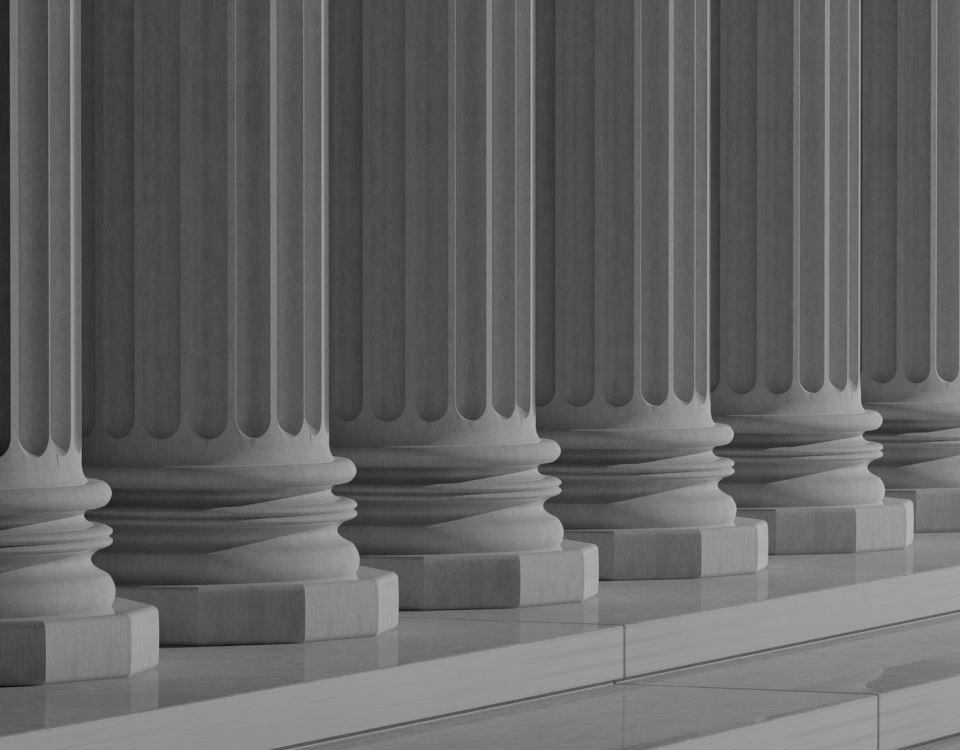
An Example of Decision-Making on a ‘Balance of Probability’ Under Op HONOUR
June 16, 2019
R v Stillman, 2019 SCC 40 – Further ‘After-Action Review’
August 16, 2019R v Stillman, 2019 SCC 40 – A Quick After-Action Review
Well, the Supreme Court of Canada (SCC) handed down its judgment in R v Stillman, 2019 SCC 40 (Stillman) on Friday, 26 July 2019. This appeal involved several different prosecutions of members of the Canadian Forces for serious[1] Criminal Code offences and was colloquially referred to as both/either the Stillman appeal and/or the Beaudry appeal.
In September 2018, the Court Martial Appeal Court of Canada (CMAC) handed down the (somewhat controversial) judgment in R v Beaudry, 2018 CMAC 4 (Beaudry), which derogated from the prior judgment in R v Royes, 2016 CMAC 1 (Royes), and the judgment in R v Déry, 2017 CMAC 2 (Déry)[2].
One of the controversies was that the court in Déry posited that Royes was decided incorrectly, but that they were bound by that parallel judgment. A differently constituted panel in Beaudry also concluded that Royes was decided incorrectly and held, 2:1, that they need not follow Royes. Bell CJ, the Chief Justice of the Court Martial Appeal Court, who authored the dissent in Beaudry, also authored the judgment in Déry.
Thus, the stage was set for the SCC to offer a definitive decision on the application of section 11(f) of the Canadian Charter of Rights and Freedoms (Charter) to paragraph 130(1)(a) of the National Defence Act (NDA) which, essentially, incorporates almost all Criminal Code offences into the Code of Service Discipline where those offences are alleged to have occurred within Canada (i.e. not on operations outside Canada).
I do not propose to conduct an in-depth analysis of the judgment here (although I may do in future blogs). However, I would like to take the opportunity to offer a few comments on the judgment that you, dear reader, may find illuminating, useful, or perhaps just distracting.
To his credit, Director of Military Prosecutions, Colonel Bruce MacGregor, refrained from dancing a jig outside the SCC chamber on Friday. However, he was clearly as happy about the outcome as other commentators were disappointed. For myself, I view the judgment in a mixed light: while there are some positive outcomes, there were a few disappointments.
Positive Outcomes
First, the judgment represents a clear majority. Although the appeal was heard by a reduced 7-judge bench, the 5:2 majority thankfully does not leave the sort of uncertainty that a plurality judgment may have had. The majority was not just a majority of that particular bench but represents a majority of the judges on the Supreme Court of Canada. Certainty of outcome, regardless of the outcome, can be a ‘good thing’.
Second, one silver lining in this outcome is that CF personnel accused of serious criminal wrong-doing before a military tribunal, will continue to be represented by the capable counsel at Defence Counsel Services. One of the outcomes of the Beaudry judgment from the CMAC was that some matters were transferred to provincial civilian criminal justice systems, where the accused (presumably) had to pay not-inconsiderable sums for representations by privately retained counsel.
The Disappointments
That said, the judgment from the SCC does bring some disappointments.
First, notwithstanding that this is (for now) the final word on the application of section 11(f) of the Charter to paragraph 130(1)(a) of the NDA, I am not entirely satisfied by the rationale offered by the majority. (Some readers may be of the view that my opinion of the majority’s rationale is of little consequence. That may be true – but then again, you are reading this blog …).
The central theme of the appeal was the proper interpretation of the military focus on the exception to section 11(f):
- Any person charged with an offence has the right … (f) except in the case of an offence under military law tried before a military tribunal, to the benefit of trial by jury where the maximum punishment for the offence is imprisonment for five years or a more severe punishment; [emphasis added]
It appears that the majority of the SCC accepted the rationale offered by DMP that “offence under military law” was not confined solely to offences created under military law (i.e. created under the NDA), but also other offences incorporated under military law (which is what paragraph 130(1)(a) of the NDA does, by incorporating offences under any Act of Parliament under the Code of Service Discipline).
Counsel from Defence Counsel Services essentially argued that such an interpretation would permit Parliament to define what is, in fact, a Constitutional term of art. Inclusion by incorporation through an ordinary statute would permit Parliament to define the Constitutional term of art of “military offences” as it sees fit, and Parliament should not be able to define Constitutional law by ordinary statute.
At para 74 of its judgment, the majority held:
Thus, “military law” was understood as “the law which governs the members of the army and regulates the conduct of officers and soldiers as such, in peace and war, at home and abroad”, and which manifested itself through the service offences set out in the CSD. And, as we have explained, from the time of the NDA’s enactment, the CSD contained a provision transforming ordinary civil offences into service offences.
The majority rejected both the argument from Defence Counsel Services as well as the ‘heightened military nexus’ test posited by the dissenting two judges, Karakatsanis and Rowe JJ.
Instead, the majority held that “an offence under military law” is one that is validly enacted under section 91(7) of the Constitution Act, 1867, which gives Parliament the legislative authority over the “Militia, Military, and Naval Service, and Defence”.
The majority sums up its rationale at para 113:
Our conclusion can be stated succinctly. Our jurisprudence establishes that Parliament has validly enacted s. 130(1)(a) of the NDA under the authority granted by s. 91(7) of the Constitution Act, 1867 (see MacKay, at p. 397). It also establishes that s. 130(1)(a) is not overbroad under s. 7 of the Charter, even absent a “military nexus” going beyond the accused’s military status (see Moriarity). It follows, therefore, that a serious civil offence tried as a service offence under s. 130(1)(a) — whether or not there is a heightened “military nexus” — qualifies as “an offence under military law” for the purposes of s. 11(f) of the Charter. Accordingly, where such an offence is tried before a military tribunal — as was the case for each of the accused persons in this instance — the military exception in s. 11(f) of the Charter is engaged. It follows that s. 130(1)(a) of the NDA is not inconsistent with s. 11(f) of the Charter, as it does not deprive a person who is lawfully entitled to a trial by jury of that right.
In other words, the majority used a provision under the Constitution Act, 1867 to help define a provision under the Constitution Act, 1982. It’s a clever step and makes a degree of sense, as far as it goes.
After all, Defence Counsel Services’ argument would fail if, instead of incorporating Criminal Code provisions under paragraph 130(1)(a), Parliament simply enacted parallel offences under the NDA. There is precedent for such enactment: after all, the offence of stealing under section 114 of the NDA has, essentially, the same elements of the offence of theft under section 322 of the Criminal Code. Of course, then Parliament would have to go to the trouble of re-enacting under the NDA every single offence from the Criminal Code that it wished to incorporate under military law. Some might argue that such effort should be required if Parliament wishes to maintain a separate, parallel system of military justice. Others might argue that such a requirement is an inefficient obligation on Parliament.
That said, one aspect of the majority’s rationale that is not entirely satisfactory is the cursory consideration of the impact of the portion of section 11(f) of the Charter regarding offences “… tried before a military tribunal”. It is essentially circular reasoning. Where an offence is incorporated under paragraph 130(1)(a) of the NDA, it is an “offence under military law”. If it is tried before a military tribunal, there is no right to a trial before a jury. However, all offences incorporated under paragraph 130(1)(a) of the NDA will be tried before a military tribunal. That’s the purpose of paragraph 130(1)(a) of the NDA. It renders the second half of the ‘military exception’ under section 11(f) of the Charter nugatory, and Charter language must have some purpose.
Regardless, the apex court has spoken regarding the application of section 11(f) to paragraph 130(1)(a) of the NDA. That is now the law of the land and, at the very least, we now have a definitive statement on that issue.
However, what the Stillman judgment does not conclude is the issue of the fairness of General Courts Martial where the chain of command of the CF may have ‘contaminated’ or improperly influenced potential General Courts Martial ‘Panels’ through its direction and public pronouncements. As I mentioned in a previous Blog concerning Stillman and Beaudry, (The Code of Service Discipline and the Supreme Court of Canada), this appeal was not about section 11(d) of the Charter.
Section 11(d) of the Charter states:
- Any person charged with an offence has the right … (d) to be presumed innocent until proven guilty according to law in a fair and public hearing by an independent and impartial tribunal
In the aforementioned Blog, I discuss the potentially detrimental effect of a CDS who takes such a vehemently public stance concerning sexual misconduct that it might appear that he is suggesting that anyone accused of sexual misconduct should be presumed to be guilty. I also comment on the potential impact that the ‘habit of obedience’, instilled on all CF members from the outset of their service, and (ironically) reinforced by the Code of Service Discipline, could have on the fairness of any General Court Martial. At paragraph 86 of their judgment in Stillman, the SCC expressly identified that their reasons did not address potential challenges under section 11(d) of the Charter. In the current politicized environment of the CF, I suggest that this issue may well be the next subject of significant appeal.
Consider the following example: Imagine there is a Canadian Joint Task Force (JTF) deployed on operations outside Canada – you could even characterize the deployment as ‘combat operations’.[3] Now imagine that this JTF experiences several incidents in which several members of the JTF have what are colloquially known as ‘negligent discharges’ – in other words, soldiers are accidentally (or perhaps, intentionally) firing their weapons due to (presumably) negligent weapon handling or other deficiencies. In some (though not all) CF circles, this is viewed as a disciplinary problem. (In others, it may be viewed as a training problem).
The JTF Commander is displeased, and he expresses his displeasure to his senior staff and his subordinate commanders thusly: “I am upset about the number of negligent discharges arising in this Joint Task Force. From this point forward, I want the culpable soldiers charged, found guilty, and sent home.” (Now, in my experience, I suggest that the language the commander might be inclined to use could be a bit ‘saltier’ than the language I have characterized herein – however, I prefer to keep my Blog ‘PG’).
You might think that such an outlandish comment would not be made by a Canadian Forces commander in our enlightened times. After all, the Presiding Officer Certification Training conducted by the Office of the Judge Advocate General (JAG) includes a very similar example by way of describing what a senior leader should not do.
Senior leaders are trained that such comments will fetter the discretion of subordinates and will jeopardize the fairness of the application of the Code of Service Discipline and military justice. (It would also jeopardize the fairness of administrative decision-making in the CF. However, I suspect that is of less concern for the JAG; after all, in the JAG’s definition of ‘military justice’, as well as the new definition under Bill C-77, ‘military justice’ does not extend to administrative decision-making, even when it has significant effect on CF personnel. More’s the pity).
I suspect that, notwithstanding such training, there are still senior CF commanders who might be tempted to make such statements. The more senior the ‘statement maker’, the more significant the impact. It may even be possible that the officer with control and administration of the CF, by virtue of section 18 of the NDA, might be inclined to make such statements.
So, when the CDS says that ‘victims’ are his “… highest institutional priority …”, and he chooses to define anyone who makes a complaint as a ‘victim’, even before there is any adjudication of evidence in the matter, it would not be surprising that an accused might consider that his (or her) guilt is pre-judged by that institution. Perhaps the pre-judged accused could be forgiven for doubting the fairness of any General Court Martial where the ‘trier of fact’ is an officer or NCM (who will often out-rank the accused) who may be less-than-open-minded in making such factual determinations when the trier of fact knows that the same CDS is scrutinizing the outcome in such General Courts Martial.
But that will be the subject for future applications relating to section 11d of the Charter.
Another lost opportunity is the possibility of scrutiny, by civilian judges and courts, of the unreasonably long time that military police investigators, particularly those of the Canadian Forces National Investigation Service (CFNIS), take to investigate allegations of serious criminal conduct. While the allegations may be serious, many of the investigations are not what could be characterized as complex. Yet, in my experience, the CFNIS often take several months, or even in excess of a year, to investigate matters that are typically investigated by civilian police in 1/10 of the time (or even less). I elaborate on this concern in a previous blog: “Possible Consequences of R v Beaudry”.
Finally, I was disappointed in the Stillman judgment regarding an issue that does not apply directly to military justice or military law. One of the controversies arising from Beaudry was the fact that the majority of that CMAC panel did not follow Royes. Bell CJ, in dissent, commented on the importance of judicial comity in ‘horizontal stare decisis‘. The CMAC in Déry followed Royes, even though they disagreed with that judgment, because of horizontal stare decisis.
The sole intervenor permitted by the SCC in Stillman was the Advocates for the Rule of Law, whose principal contribution was argument regarding the importance of horizontal stare decisis in ensuring predictability, stability, and consistency in judicial decision-making.
As an aside, I want to take the opportunity to offer an observation about the simple beauty of the name of this group. Here is what could be said to be their mission statement:
Advocates for the Rule of Law is a non-partisan Canadian think tank dedicated to furthering the principles of constitutionalism and the rule of law for the benefit of all.
We seek to ensure that Canada remains a society in which government officials are subordinate to the law, the people are governed by fixed rules known in advance, and the courts apply the law equally, impartially and predictably.
It’s tough to argue with that sentiment.
The impact and relevance of horizontal stare decisis after the Beaudry judgment was felt within the military justice community when Commander S. Sukstorf, a military judge, rejected a defence application to terminate proceedings in R v Ryan, 2018 CM 2033 (Ryan). When faced with the Beaudry judgment, Cdr Sukstorf MJ essentially based her rejection of the application on a preference for the CMAC judgments in Royes and Déry. (Following the SCC rejection, on 14 January 2019, of the DMP motion for a suspension of the ‘declaration of invalidity’ in Beaudry, counsel for Ryan again advanced a motion to terminate the proceedings, and DMP withdrew the charges).
Both in Beaudry and Ryan, counsel could not present definitive law – particularly from the SCC – on the proper application of the principle of horizontal stare decisis. That issue was worthy of comment and direction from the apex court in Stillman. However, neither the majority nor dissent offered any direction on that issue. It is unfortunate that the Court let that opportunity pass.
Conclusion
Thus, the SCC in Stillman closed the door on challenges to paragraph 130(1)(a) of the NDA under section 11(f) of the Charter. It did not venture any meaningful comments on the merit of a challenge under section 11(d) of the Charter (and I would suggest that they did not have any reason to do so). Although this likely closed the door on any meaningful scrutiny of tardiness in military police investigations arising in future cases, there remain a few cases, transferred to the civilian justice system post-Beaudry, in which civilian courts may have cause to examine such delays. And we will have to wait for a future opportunity to obtain greater particularity concerning the parameters of applying the principle of horizontal stare decisis, particularly at the appellate level.
[1] The term ‘serious’ is used in the sense of section 11f of the Canadian Charter of Rights and Freedoms (Charter), in which the offence carries a maximum punishment of at least 5 years imprisonment.
[2] For clarity, when Déry was appealed to the SCC, the style of cause changed to R v Stillman; the appellant Déry withdrew from the appeal, resulting in a change of the style of cause.
[3] Any Code of Service Discipline considerations involving the incorporation of Criminal Code offences in such circumstances would arise under paragraph 130(1)(b) of the NDA, not 130(1)(a). However, the example I provide here is not about the appropriateness of incorporating civilian offences under military law – it is about when a senior military leader fetters (or is perceived to fetter) the propose exercise of discretion by subordinates. This includes the exercise of ‘fact-finding’ by a Panel to a General Court Martial.




